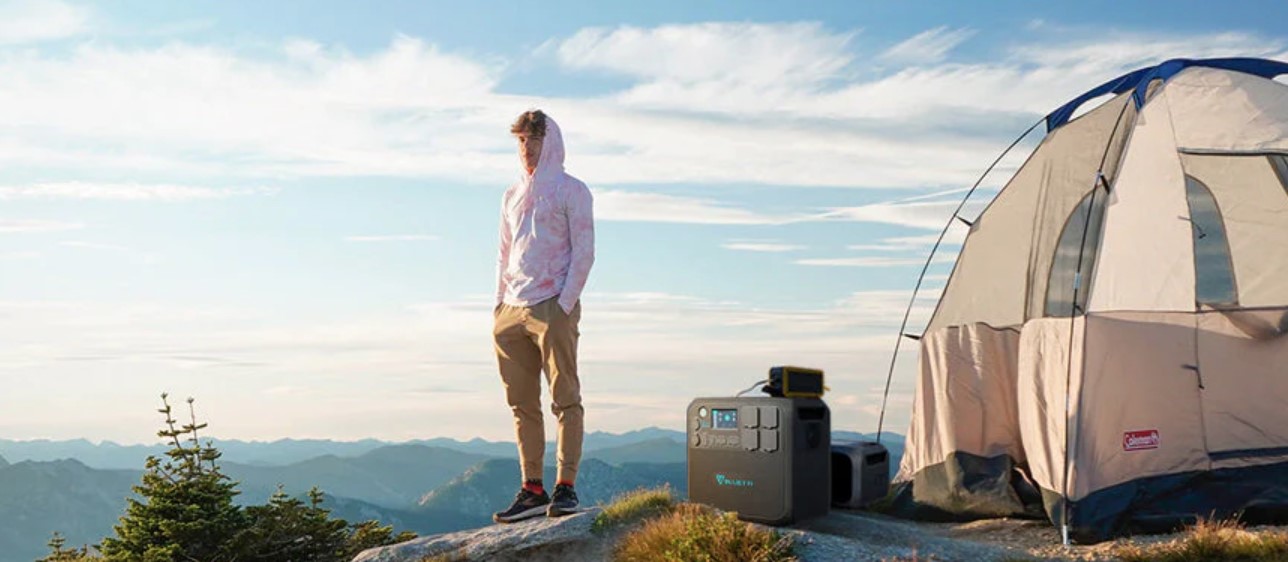Best portable power stations – time for glamping and more (off-grid 8/24)

What are the best portable power stations for various uses? What defines best? Well, we have done the hard yards for you whether you are a camper, boatie, RV or need emergency power.
Reader Brad asked if we could recommend the best portable power stations along the lines of our Best Android Phones July 2024 – some gems there.
Now, that is a big ask, so we have updated our Portable Power Stations—Power on the Go guide to cover different uses. This guide has an Excel spreadsheet with all the data we have gathered to make recommendations.
Things defining best portable power stations – for you
- The best use Lithium Iron Phosphate (LiFePO4 or LFP) batteries. These have a lower energy density (require more battery cells) but are highly safe (no thermal runaway) and low smoke toxicity (there is no Cobalt, Nickel, or Lead). LiFePO4 is made from Graphite, Iron, and Copper.
- The better ones have 3000+ charge cycles. Don’t buy Lithium-ion or Lithium-polymer (Li-Po).
- What is your real need? Harvey Norman experts say the biggest issue is that people don’t buy the right size for their needs. You must add up the total wattage of all the items you need to power and size accordingly. Don’t buy a sports car for a family!
- How long will it last with this load? If you have an older 100W incandescent light bulb and buy a 1000Wh (Watt/hour) station, you will get a maximum of 8 hours. Time depends on the inverter’s efficiency in converting battery power to 240V and a few other things. Think of this as kilometres per litre, and some brands of portable power stations are more efficient.
- Similarly, they don’t buy the right inverter wattage (not watt hours) capacity. Let’s say you have a fridge that jumps to 2000W when it cycles on and then falls back to 500W in operation, and the inverter needs to handle the maximum load. Think of this as buying a 4-cylinder car and trying to tow a caravan.
- Weight matters. Remember, the more Wh, the more batteries and weight there are. The operative word is portable, so figure on smaller ones at <10kg and larger ones from 15-30kg. Campers can get mighty tired carrying an extra 5-10kg.
What are the best brands?
It is not our place to recommend one brand over another but to look at things like warranty (most are now five years), build quality (most are very durable), local service, etc.
Frankly, we have not reviewed enough brands yet. Harvey Norman lists 47 power stations but says Bluetti is its top-selling brand with more models, followed by EcoFlow, NRGVault and Jackery. It also has some lesser-known brands for niche markets. JB and Good Guys sell Anker and EcoFlow. Bing Lee sells NRGVault. BCF sells Bluetti and EcoFlow and, thankfully, no longer stocks the cheaper lithium-ion brands.
And that is the point – dozens of brands, all directly shipped or imported from China, are sold via hardware, automotive, camping, and boating stores. You are gambling with quality, warranty, local support and even R-NZ C-Tick power certification. The brands that meet our expectations include:
We compare small, medium and large
In preparing this guide, we had to dig deeply for full data on each power bank. The exception was Bluetti, which had full details. EcoFlow was OK, Jackery was light on, and Anker had little information.
Bluetti included one fact that others do not: the inverter’s efficiency. Bluetti claims 93% inverter efficiency in converting DC power to 240V AC. Now, we know that many other brands are closer to 85-87%, which is reflected in their lower total usable time. Bluetti also factor in Depth of Discharge at 95%, whereas other brands cut power at 80%. External reviews indicate that Bluetti lasts about 20-30% longer than an equivalent Jackery.
We did not look at IP ratings—most models are not waterproof, but you can buy models that are.
There are several common sizes
- 300-499W – Winner Bluetti AC2A
- 500-1000W – Winner Bluetti AC70
- 1500-1999W – Winner Bluetti AC180 and best overall value ‘bang for buck’
- 2000W – Draw Anker 767 and Bluetti AC200L
- Larger – not compared
The winner, as per the attached Excel spreadsheet (press the Download link below), is calculated based on cost per inverter Watt, cost per watt hour, and capital cost per charge.
Please note that RRP is used, and excellent discounts are often available. You can change the prices in the spreadsheet.
The Winner is Bluetti
Bluetti won in all four categories and tied with Anker 767 in the 2000W category.
EcoFlow looks OK, but rubbery RRPs may not reflect real-world pricing.
Anker Solix is in the process of setting up in Australia instead of using a distributor, and new models and pricing will be coming soon.
Jackery seems more focused on marketing, and some of its claims appear incorrect as if they have been cut and pasted from another webpage. Discounts were more the norm.
Brought to you by CyberShack.com.au







